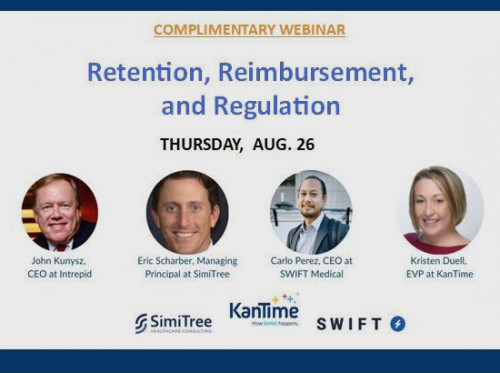Agencies struggle with employee retention under PDGM, other Medicare regulations.
Fallout from Medicare’s new and complex payment methodology, the Patient-Driven Groupings Model (PDGM), is creeping beyond the numbers on the home health agency’s P&L statement to take its toll on human resources.
As home health agencies struggle with cash flow shortages and thinning profit margins under PDGM, their key employees are bailing, looking for companies with more solvency, less regulatory burden, and better compensation packages.
“This is one of the most serious challenges in our industry right now,” said SimiTree Healthcare Consulting Managing Principal Eric Scharber, who works with agencies nationwide to recruit top talent and develop retention strategies designed to stem the exodus.
“There’s a generational aspect to what we’re seeing right now,” Scharber said. “As millennials become a larger part of the work force, they bring higher expectations with them. They want better life-work balance, more efficient technology in the workplace, and ongoing training to help them stay abreast of regulatory demands.”
Training and technology
Governing boards and home health administrators are responding by re-thinking compensation packages and budgeting more on continuing education for their employees. They’re also implementing leadership training for better recruiting within the organization and exploring other ways to keep employees with industry-specific skills and knowledge.
“Stakeholders are recognizing that key employees have alternatives, and action is required to keep them,” Scharber said. “It may require a new set of career advancement strategies or investing in updated technology that makes work processes more efficient and less cumbersome for employees. It may be re-thinking time off policies and offering more work flexibility. All these things are crucial employee retention considerations.
“We used to say it was smart and forward-thinking to have in place programs supporting stability in the workforce. Now it’s more than smart. It’s a necessity,” Scharber added.
The bottom line
In heavily-regulated industries such as home health, the loss of employees with specific knowledge can be particularly costly.
As an example, the Centers for Medicare and Medicaid Services (CMS) implemented a new requirement this year for home health agencies to file a non-paying Request for Anticipated Payment (RAP) within five days of the start of care for each 30-day billing period or pay a penalty for each day the RAP is late.
"The new requirement necessitated operational changes at most agencies to make certain clinicians expedite documentation to close out the first billable visit in a timely manner. Training was also needed for billers to understand the implications. Turnover in key positions opens agencies to vulnerabilities which can have serious financial ramifications, with penalties quickly gobbling an agency’s payment," Scharber said.
Last month’s announcement by CMS that it plans to expand the Home Health Value-Based Purchasing (HHVBP) nationwide will create additional opportunities for potential revenue losses due to employee knowledge deficits.
“VBP relies on some specific home health performance metrics to determine adjustments in agency payment,” Scharber said. “Agencies are going to need staff with an understanding of how those performance metrics are affecting payment.”
A complimentary webinar
Scharber will weigh in on the relationship between regulations and retention in a panel discussion scheduled for Thursday, Aug. 26. He will be joined by John Kunysz, CEO at Intrepid, Carol Perez, CEO at SWIFT Medical, and Kristen Duell, EVP at KanTime.
The complimentary webinar is titled, “Retention, Reimbursement and Regulations,” and will begin at 2 p.m. Eastern.

